Summer will soon be coming to an end soon, but right now there’s still plenty of time to get out on the water! One of the most fun outdoor water activities for families is stand up paddleboarding (SUP). Not only is stand up paddleboarding a great work-out, but standing upright on a paddleboard lets you look down into the water and really connect with the nature around you. Today, we have Chelsea Furlong, a professional photographer and (new) homeschooling mom of two, here with tips on how to stand up paddleboard with kids and everything you need to know to get started.
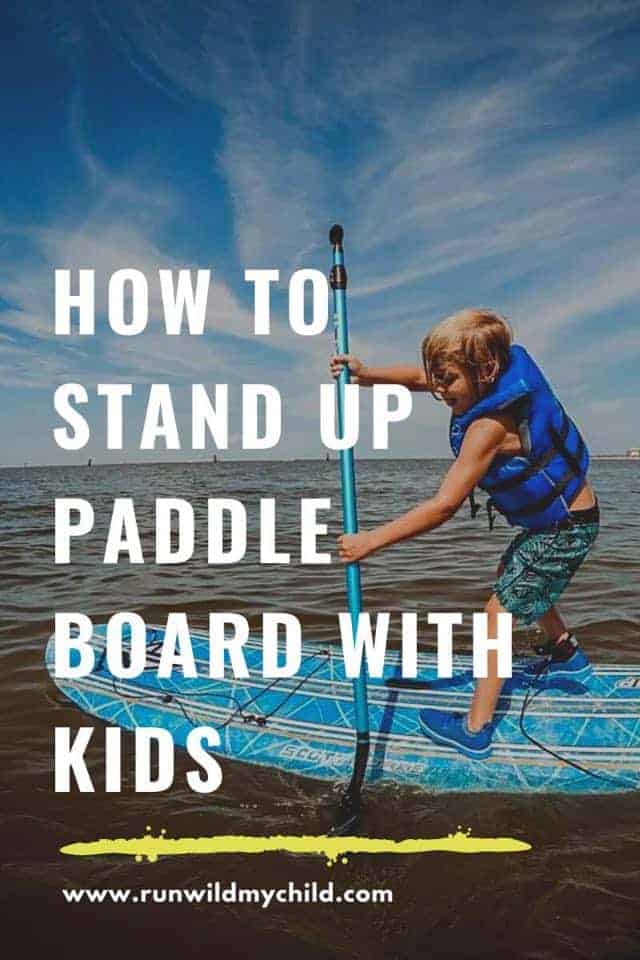
Benefits of stand up paddleboarding (SUP)
Paddleboarding is a great way to spend time with your family outdoors. You get fresh air and sunlight, which we can all use during stressful times, as well as plenty of full-body exercise. SUP promotes balance, increases arm, leg and core strength, and improves endurance as well. The balancing works on your foot, leg, and core, while the paddling is great for your arms and shoulders! Paddleboarding is also a great way to build confidence in children. They get so excited when they’re able to stand securely and do it themselves. Being on the water is also amazing for stress release, which we could all use more of right now. Being outside and in nature is imperative to your family’s mental health.
SUP during COVID
Because of the pandemic this year, there’s been a boom in individual sports that allow for fresh air and physical activity, while still following social distancing guidelines. Biking, skateboarding, hiking, kayaking, and stand up paddleboarding are popular outdoor, COVID-friendly family activities. While the beaches may be closed during the pandemic, stand up paddleboarding gives you an opportunity to enjoy the water without using the beach! Our city allowed the residents to exercise outside during quarantine, so stand up paddleboarding was a great option!
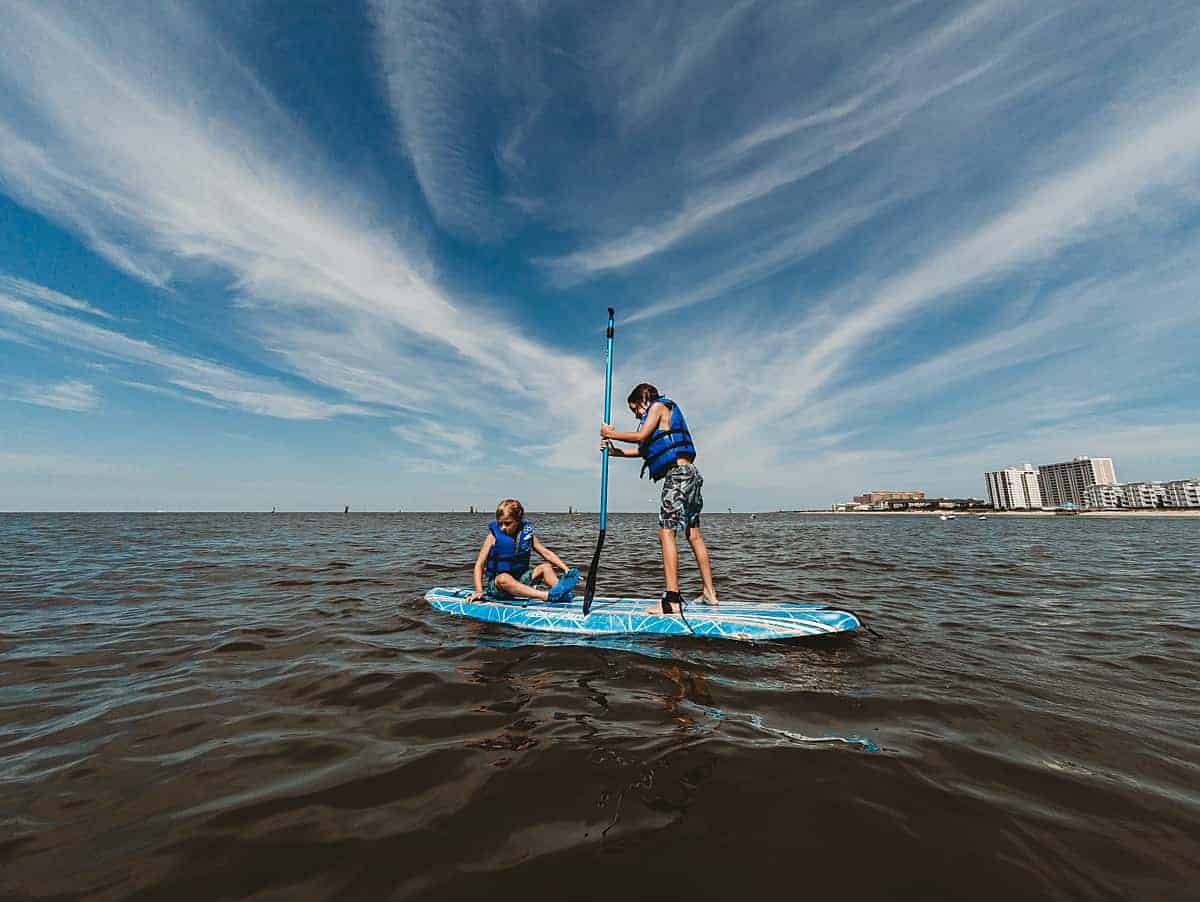
What do I need to stand up paddleboard with kids?
The supplies needed for stand up paddleboarding are minimal! You’ll need a stand up paddleboard, a paddle, and personal flotation devices (PFDs) for each person. There is a fairly wide range when it comes to the price of paddleboards, depending on the size, material and brand. We have two solid paddleboards, but many people now are purchasing inflatable stand up paddleboards (iSUP) because they are easier to store and transport!
When picking a stand up paddleboard, it is important to note the size and weight limit of the board. Wider boards are easier to balance on and great for doing yoga and toting kids along! They usually have a higher weight limit as well. The thinner boards can be more difficult to balance on but are better for SUP surfing! If you have young children that you plan riding with, be sure that the board you pick can handle the weight of you both!
Some SUPs come with a paddle, but if you are purchasing the board and paddle separately I recommend an adjustable paddle. With an adjustable paddle, you can make it smaller for the kids when they’re paddling and then make it larger for you when it’s your turn to paddle.
If investing in your own SUP isn’t in the budget, look for a local SUP rental company! Renting equipment is a great option for those just getting started to see whether they’ll like it.
Other items to bring along
Another great item to have, but isn’t necessary is a waterproof bag that can attach to your board. We have one like this that I’m able to clip right to my board. We usually keep bug spray, sunscreen, car keys, and a cell phone in there in case of an emergency. You obviously run a risk of the bag detaching and losing your keys/phone in the water, so always double-check that it’s securely fastened. When we have our whole family on the water, we feel having a way to call someone during an emergency is definitely worth the risk of the bag detaching and falling in the water.
How to get started stand up paddleboarding with kids
Once you have your gear, the only other things you need are water and a sense of adventure! Learning how to stand up paddleboard may sound intimidating, but it doesn’t take long before you’re on your board cruising through the water. Here are a few more tips for getting started.
Where to go to stand up paddleboard?
You can technically try stand up paddleboarding in any body of water. However, I’d recommend that beginners start on lakes and ponds and avoid the open ocean or rivers. This way you don’t have to worry about large waves or fast-moving currents. The more confident and comfortable you are, the easier it will be for you to start transitioning to moving water and the open ocean.
Get comfortable on your board first
Before you get your children involved, you’ll want to be sure YOU are comfortable stand up paddleboarding. You should feel comfortable balancing, paddling, falling and climbing back up on the board. When you add children to the mix, you’ll have to manage all of that PLUS assist them in the water and back onto the SUP if they fall. If you’re brand new to the sport, I recommend taking some time on your own to get the hang of it. Start on your knees and then work your way up to standing.
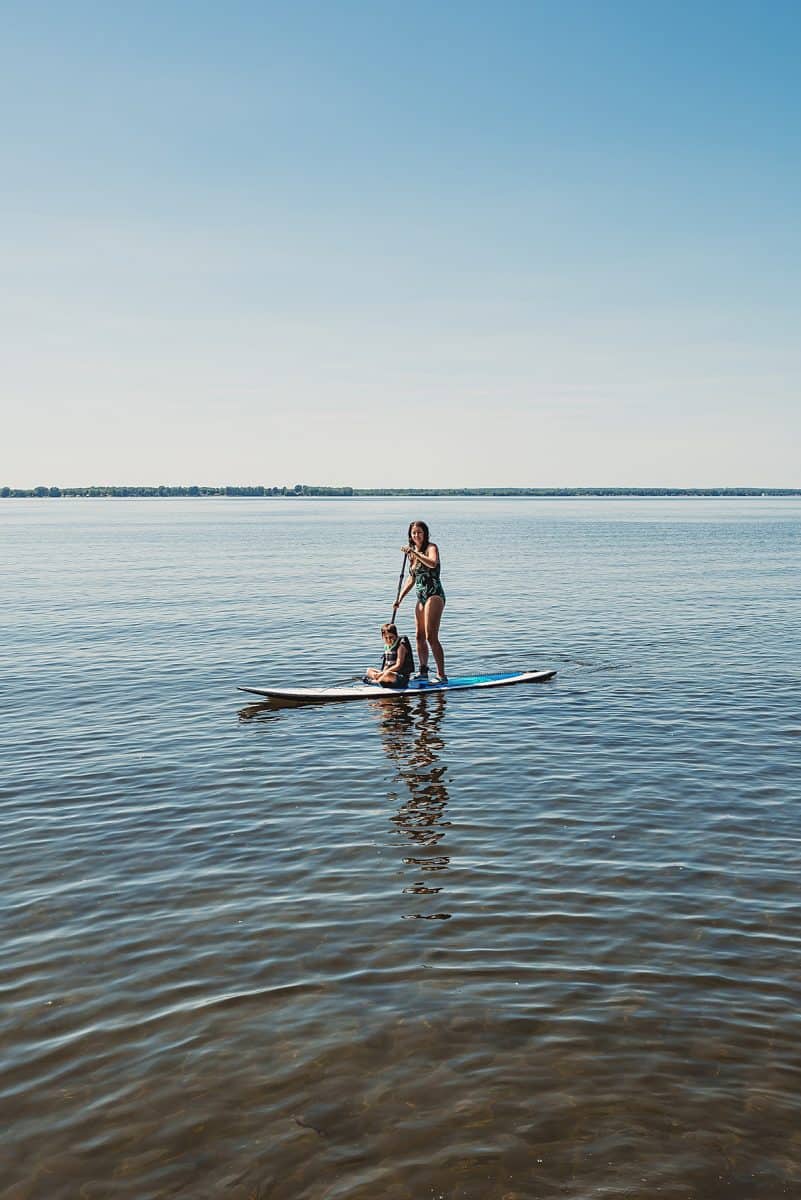
Practice in shallow water
Once you’re feeling ready, it’s time to add in the kids! Before you toss your kids on a paddleboard and head out of a long adventure, you’ll want to be sure they’re comfortable in the water and on the board. You’ll want to help them practice in shallow water so you can stand beside them, hold the paddleboard, and assist them as they become more comfortable. It may take quite a few spills and retries before they figure it out.
Make practicing fun for the kids
Before taking our kids out on adventures, we made games for them to play on our stand up paddleboards. It’s important that your children feel comfortable falling off the board, swimming back to it, and climbing back up on it. We let our kids practice by standing up on the boards and jumping off into the water! Kids LOVE doing this! It’s like having your own dock to jump off.
The other game they play is a made-up game called “Paddle Battle.” This is better for older children. Both kids stand up on a paddleboard facing each other, a few feet apart. I call out, “3, 2, 1..Paddle battle!” and they each use their legs to rock the SUP back and forth until someone falls off. The last one standing is the winner! This is great for balance and stability practice, and they get used to the feeling of falling off the board and then climbing back on.
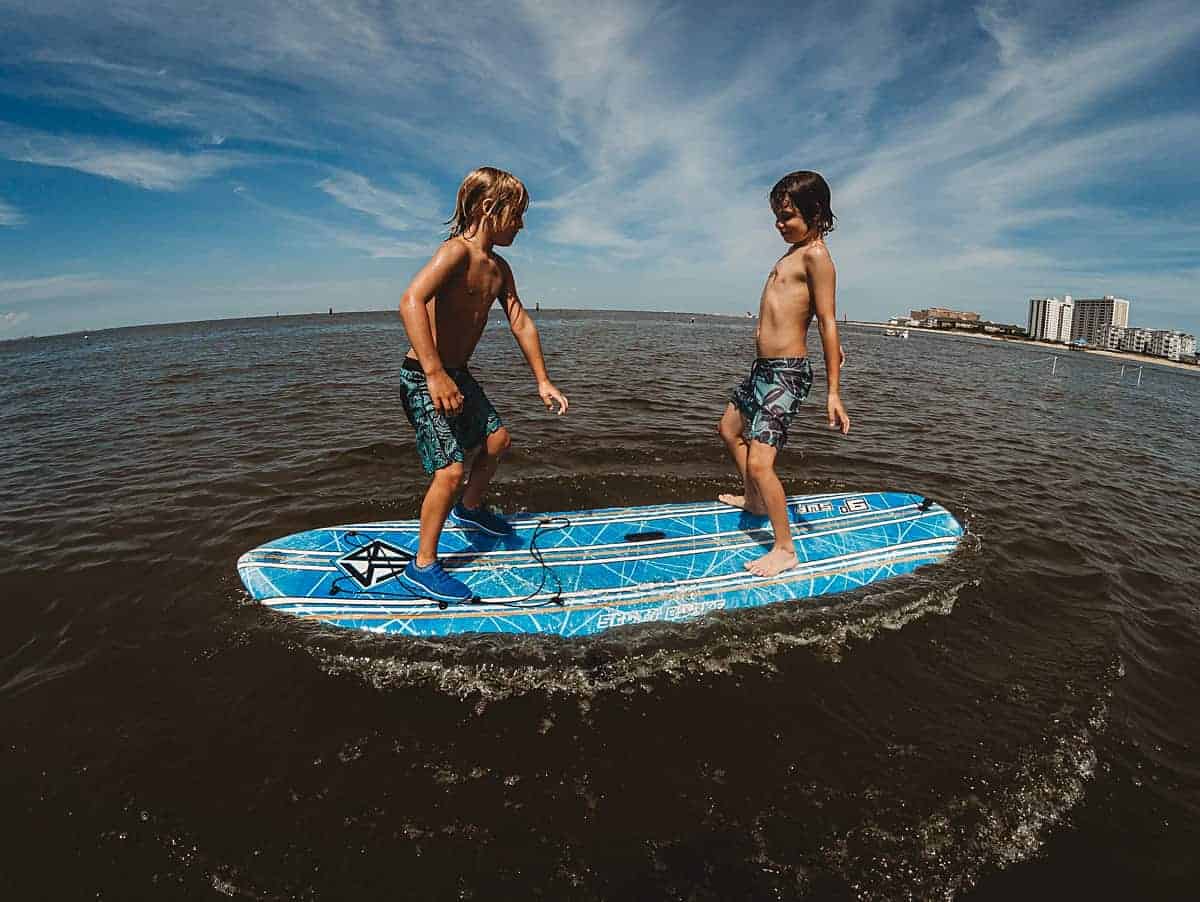
SUP with younger children
For younger children, you’ll want to have them feel what it’s like to sit on the board. You can have them explore the paddleboard on land and in the water. Have them sit on the board while you stand next to them holding the board and give them a nice, slow, calm ride around a shallow spot. Once they’re comfortable with that, you can try kneeling on the SUP with them sitting in the front, and paddling from a kneeling position. That way you’re still nice and close to them, and able to provide comfort and encouragement.
Practice paddling
When the kids are comfortable on the stand up paddleboard, you can then have them begin to practice paddling! You’ll want to start in a shallow place so that you can stand next to them and help them navigate. If they’ve been kayaking, learning to paddle on a SUP will be easy! Make sure your children are comfortable paddling in a straight line as well as making turns before you head out too far. My kids like to paddle forward fast and then stop the paddle in the water to make quick turns.
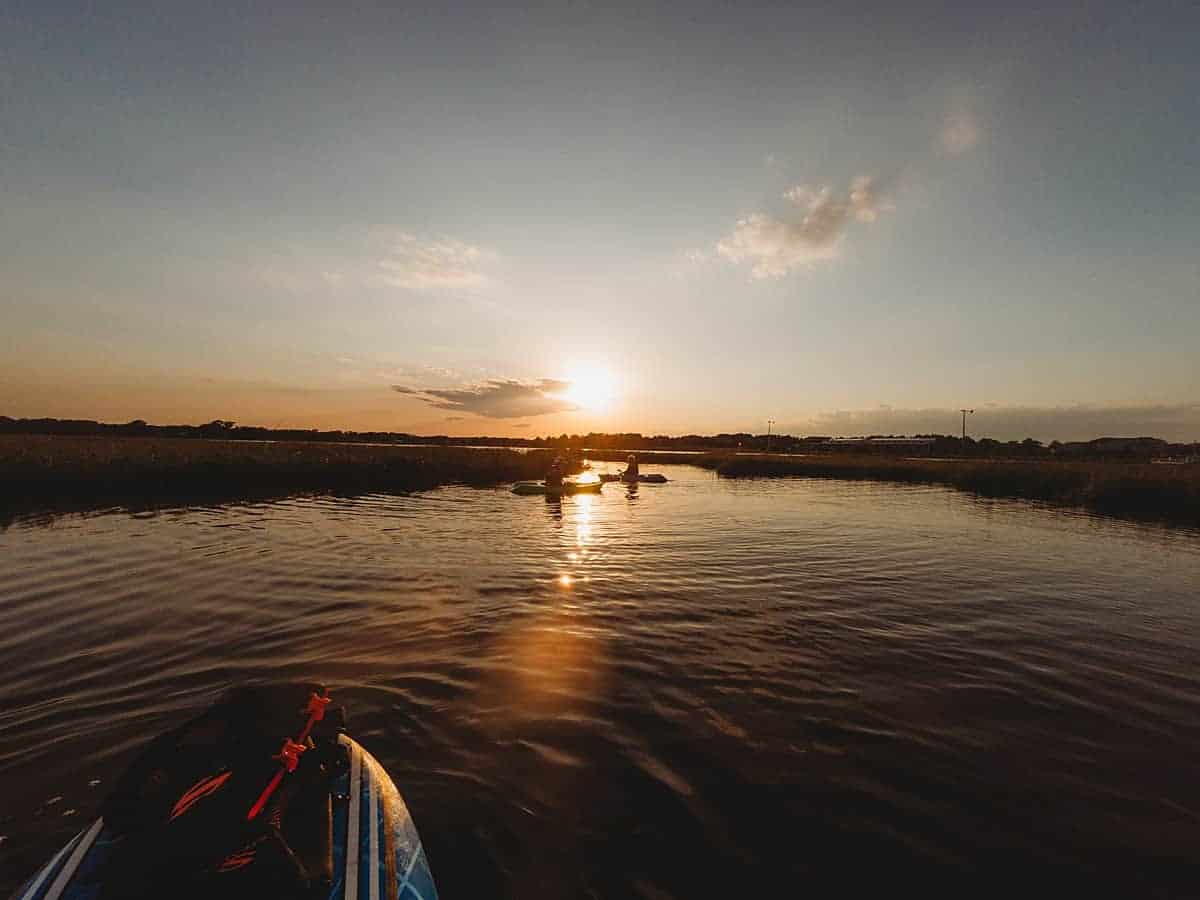
Get out there!
Once you and your children are all comfortable on your stand up paddleboard, it’s time to adventure! Depending on the ages of your children, you may choose to have them sit on the stand up paddleboard with an adult paddling or have them paddle on their own.
Pro tip: Our children are at an in-between age right now. They’re older and able to paddle alone, but not for long distances. So they use these children’s kayaks for longer adventures and paddle in their kayaks while my husband and I use our SUPS. The small kayaks are lightweight and easy to carry. They’re also very easy to turn so it’s great paddling practice. It’s a wonderful way for all of us to have a great experience on the water during a longer journey!
Find what works best for your family and head out exploring! The memories you make together will be priceless, and you’ll all go home feeling rejuvenated.
Have you been stand up paddleboarding with kids?
What’s your favorite tip?
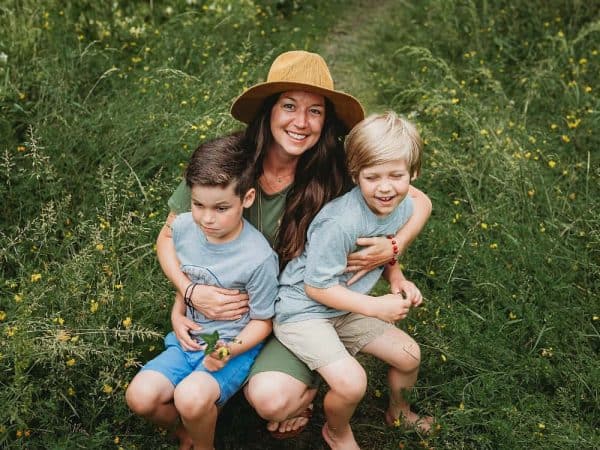
About the author
Chelsea is a photographer, mother of two busy boys, and a sunshine and fresh air addict. Her family lives in Virginia Beach, Virginia, and spends as much time outdoors as they possibly can! Most of their outdoor adventures involve exploring the beach, inlets, and nature trails nearby. They love biking, hiking, paddleboarding, kayaking, building forts, and playing in the sand! During the warm months, you can find them enjoying the Chesapeake Bay almost every night until long after the sun goes down. They’re doing our best to reduce their carbon footprint and always try to leave every trail cleaner than it was when they arrived.
You can find Chelsea online in the following locations:
Instagram: @dimples.and.the.blonde
Website: dimplesandtheblonde.com
RWMC posts: Chelsea Furlong

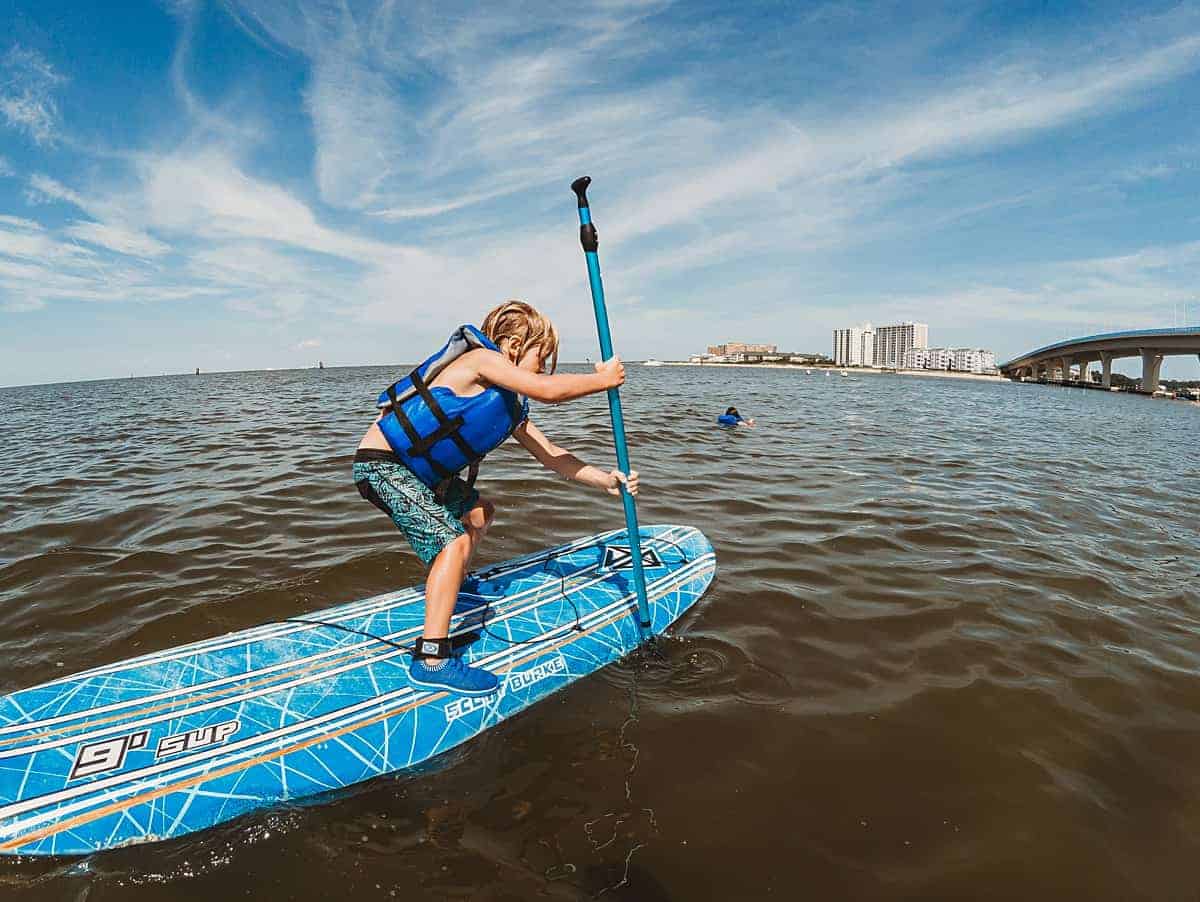







Paddle sports improve your lungs’ ability to provide oxygen to your body and reduces the risk for heart attack and heart disease. At least 30 minutes of steady exercise is linked to a decrease in heart disease.
No doubt, the post is incredible, and also every time I read your blog I just got fastened with the content of the post. How easily you describe each and every perspective of the topic of the post.